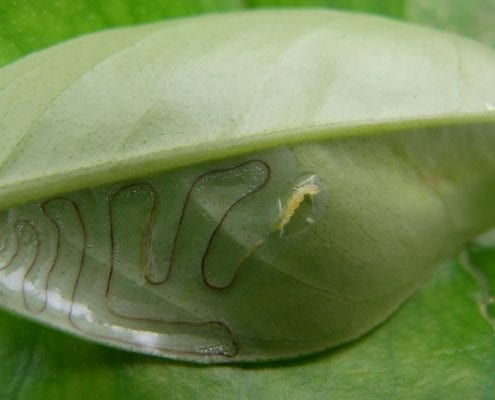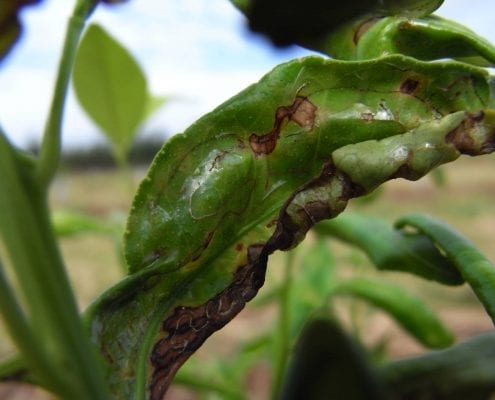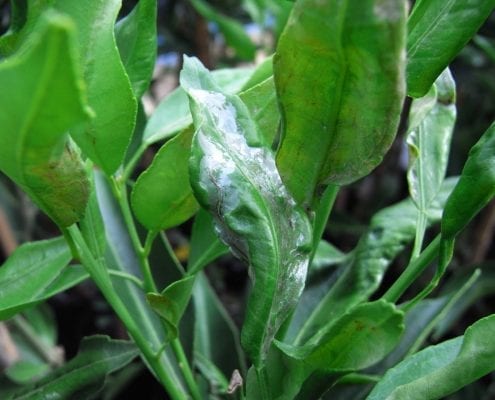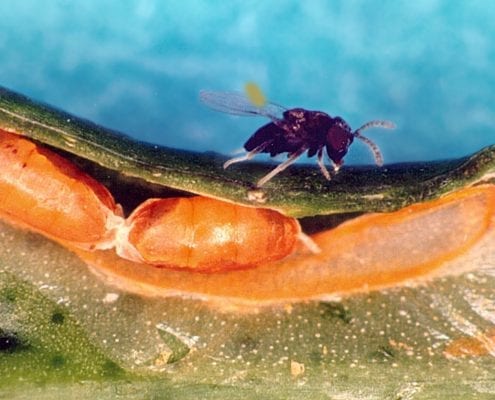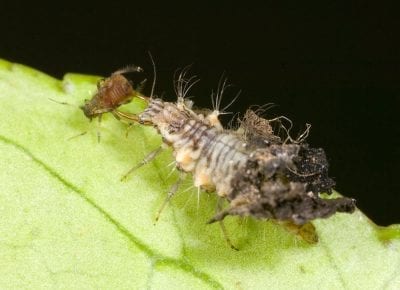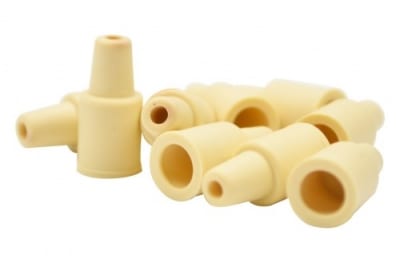Citrus leafminer
Citrus leafminer (Phyllocnistis citrella) is the only leafminer that attacks citrus in Australia. The adult female moth lays her eggs on young citrus leaves and when they hatch, the larvae immediately burrow under the surface of the leaf. The larvae complete their development under the leaf cuticle, feeding on sap. As they move around the leaf they leave behind them a sinuous silvery trail of lifted cuticle, lined with exctreta. Infested leaves become distorted (twisted and curled) as they grow, and severe infestations can stunt the growth of young trees.
Natural enemies of citrus leafminer include generalsist predators such as lacewings, and a range of parasitoid wasps.
Citrus leafminer is generally not active in Spring when the dominant growth flush occurs. This means that while often unsightly, citrus leaf miner rarely warrants chemical intervention.
Detailed information about the lifecycle, natural enemies and management of this pest can be found in Citrus Pests and Their Natural Enemies: As this publication is currently out of print, you may wish to view a pdf of the section on citrus leafminer here.
Solutions
Lacewings are aggressive general predators that feed on a range of pest insects and mites. They are known to feed on citrus leafminer, and while releases of lacewings are unlikely to give economic control in an orchard situation, this could be a worthwhile management tool in home gardens and nurseries.
Citrus leafminer pheromone lures can be used as a monitoring tool. These species-specific lures attract male citrus leafminer moths by mimicking the scent of the female moth. They can be used to monitor activity of the adult population, giving an early warning of pest activity and an indication of pest pressure throughout the season. This information can be used to improve pest management decisions and outcomes.

